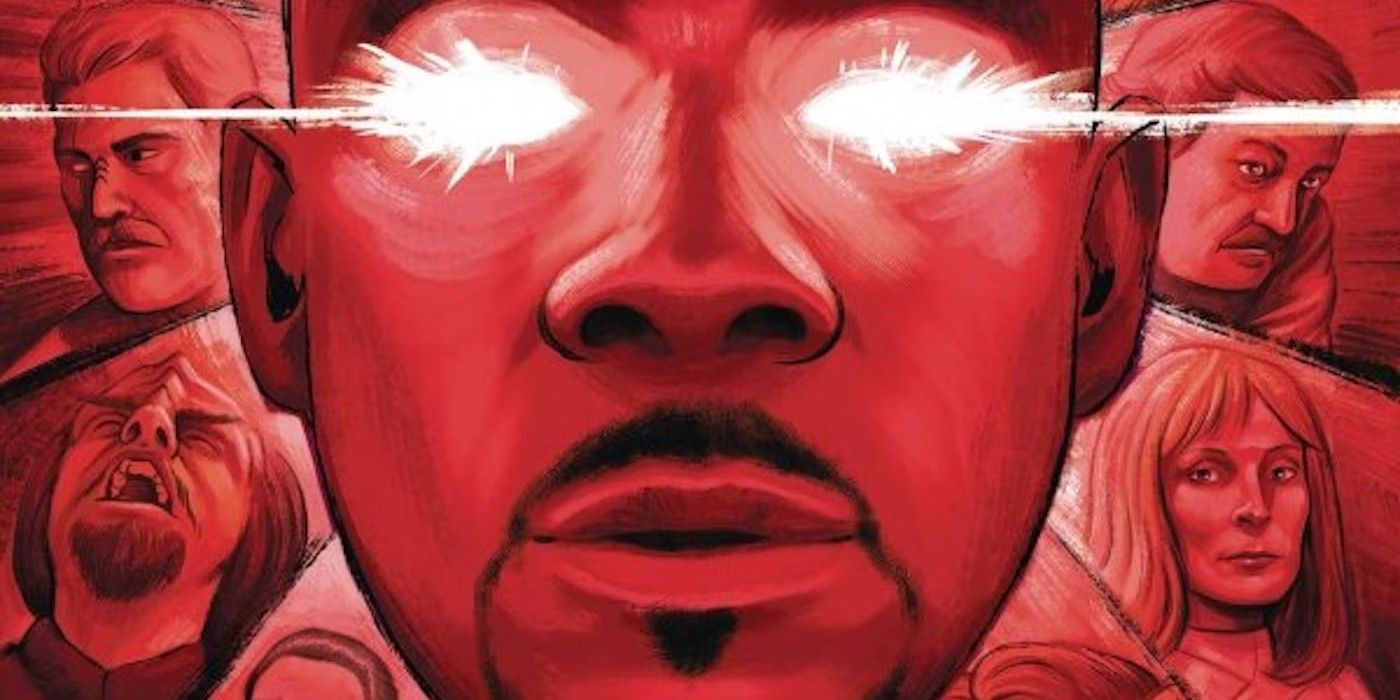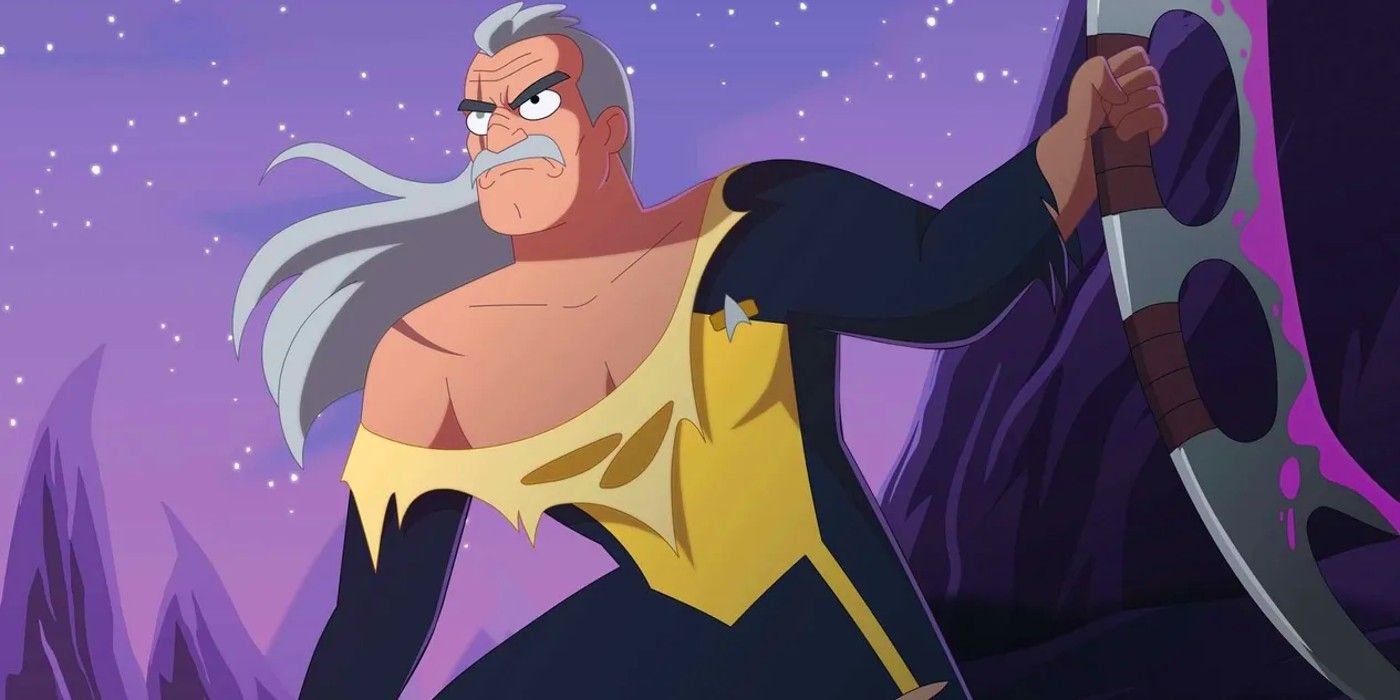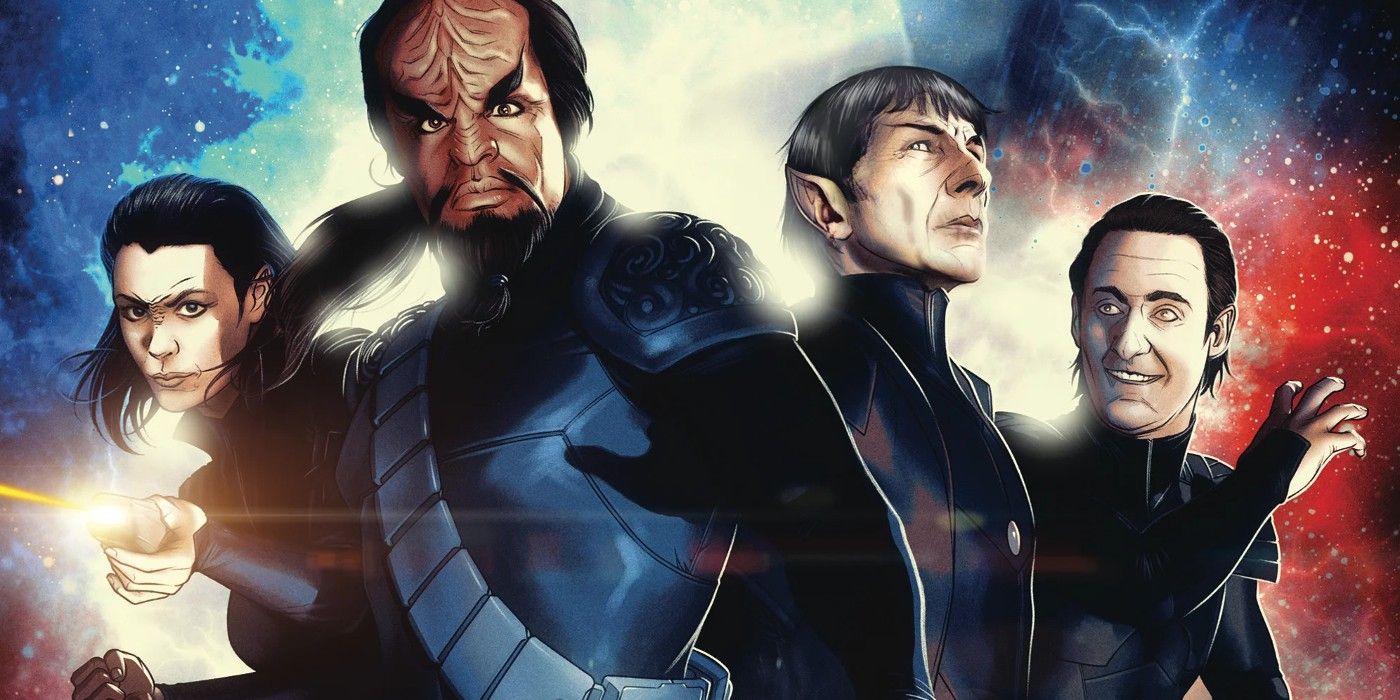Star Trek is currently experiencing a renaissance, not only on television, but also in the world of comics. Last fall, IDW Publishing, the company that has been producing Star Trek comics since 2007, breathed new life into the franchise’s comic line, receiving great acclaim. This revitalization led to the creation of Day of Blood, the first-ever crossover event in Star Trek comics, and earned the series two Eisner Award nominations.
This rebirth began in Star Trek #400. The one-shot, featuring a variety of stories, introduced an epic storyline in which a mysterious and powerful force starts killing the universe’s god-like beings. The Bajoran Prophets bring Ben Sisko back to our reality to uncover the culprit. After assembling a crew from various iterations of the franchise, Sisko discovers that the Klingon Emperor Kahless II is responsible for the slaughter. Kahless not only wants to eliminate the gods, like his namesake, but also seeks to absorb their power. The Star Trek: Free Comic Book Day Special sets the stage for the epic Day of Blood. FilmmakerFocus sat down with Star Trek writers Jackson Lanzing and Collin Kelly, as well as Senior Editor Heather Antos, to discuss Day of Blood and what lies ahead for Sisko and Worf.
SR: How is your Comic-Con experience going so far?
Jackson Lanzing: It’s been amazing. We had the Star Trek panel earlier where we announced some exciting new developments. We also got a sneak peek at the artwork for the upcoming Star Trek series, set after the events of Day of Blood, which has been incredibly fun.
Collin Kelly: We’ve been spending time at our booth, and the Star Trek fans have been showing up in droves.
JL: It’s clear that Star Trek is a big hit at our booth, which is fantastic. It’s always a thrill to see fans captivated by their favorite characters in these books, especially since we are lifelong Star Trek fans ourselves.
Day of Blood Was a Massive Undertaking
SR: With Day of Blood being the first big Star Trek comic event, do you have a list of the rules of event comics? Because event comics can be very, very good. Event comics can also completely kill fan interest. So I imagine there’s a bit of a tightrope.
CK: Absolutely. We are fans first and foremost, so we have the pedigree of reading both the good and the bad. What we found the key here was communication. We are reading every script that Chris Cantwell, who’s the writer of Star Trek: Defiant-
JL: And is our co-writer on everything on Day of Blood? We all broke it down together in a room physically. All of us were in a room breaking that story together. So everyone knew what was up from moment one.
CK: And through that communication, we were able to really keep everyone on the same page, to the point where sometimes we would argue. It’s really important to make sure each of us are representing each other’s characters correctly, because it can tell kind of one large story. And I think that was really one of the magic tricks we pulled off.
HA: I also want to be clear when they argue they said, “I don’t know if I agree with that.” And that was the extent of that.
JL: Conflict is actually really light because Chris comes from the same space we do. We were friends before we started this book. He came onto this line because when we were doing Star Trek: Year Five before Heather came on, and we were getting our feet wet on Star Trek. Chris was a fan of the book, and he would DM me on Twitter. We didn’t know each other. He would DM me and be like, “Hey, how do I pitch Star Trek? I have a Janice Rand miniseries. How do I make this happen?” And I would be like, “You don’t. There are actually a lot of problems with doing Janice Rand.” But at the same time that he was doing that, I was watching Halt and Catch Fire. And I was like, “Halt and Catch Fire is one of my favorite things.” We became fast friends over a mutual admiration society. And so when we had this opportunity to bring somebody else in, we were like, “It’s got to be Chris because we know that we’re already going to sync with him.”
In terms of how we actually manage an event, I think the other thing that’s really key is not putting plot first, which might seem insane for an event, because events are driven by plot. Something big happens in every event. In comic events, it’s almost always the world that explodes, right? It’s some big thing. Sorry. And we knew that we had that in Kahless making his move. He has been gathering power, he has been killing gods, not just because he wants them dead, but because he wants their power.
And as he has taken that power and weaponized it. He understands how to wield it and has returned to Kronos to take the power he thinks he deserves. And that kickoff, the coup that he pulls off in issue one–that’s the plot. After that, everything else in Day of Blood is built on character, which is always sort of our thing in Star Trek. Frankly, it’s kind of Collin and mine’s thing in every book. It’s about the arcs and the characters and what they’re going through. Here, it was a chance to say, “Okay, we have how many characters? 22 characters in this book or something?” Day of Blood has every Star Trek character on the board right now. We threw them all in here and then literally in that room said, “What’s every single one of their arcs? What is Sisko’s arc? What is Worf’s arc? What is B’Elanna Torres arc?”
HA: That’s literally the first thing we did on the board. We wrote, “Who’s the cast? What are the interesting pairings that we and fans want to see, the interesting interactions of these characters? What makes sense? And then where do we have to end up? It’s Google Maps, right?
JL: Yeah
HA: That’s Google Maps. “Okay, here are all the different routes. Who’s paying tolls and who’s jumping across the city skylines?”
JL: And how do you use that to have characters grow and change? Because to me, event storylines tend to, I think, falter when they become an effort of plot mechanics and spectacle. Plot mechanics and spectacle are relatively easy. And frankly, plot mechanics can overburden a book very easily. If you know what the character’s going through, if you know that the character’s growing and changing, then the plot can be there, but the character’s heart will take you through. And Star Trek’s generally been really great about that. So-
HA: Events don’t matter if there’s no shift in status quo.
JL: Exactly. And that status quo can’t just be the world; it has to be in the heart of the character. This event isn’t just one that happens outside Sisko. This is the culmination of his arc in the first 12 issues of Star Trek. By the end of this arc, he’s on a new arc, heading into the second year of Star Trek. Same thing with Worf.
Worf basically ends his arc here and then gets to embrace a new one moving forward. Everybody’s going through a version of that. And it’s not like everybody’s going through their arc culminations here, but they’re all plotted along the line so that the event matters. Not just because Kronos is under new leadership or because X ship blew up or whatever, but because the characters themselves have been fundamentally changed by the events.
Shaxs Almost Did Not Make It In
SR: That’s such a smart approach and that’s really evident. So with characters being such the central focus, were there any characters that you had a little bit more difficulty with mapping out and finding their place?
JL: There’s one legendary answer to that.
HA: There is one legendary answer to that.
JL: Shaxs. When Worf left, starting Star Trek Defiant, it left the tactical station open on the Theseus, and we wanted to make sure we gave ourselves a cool character there. So we used Shaxs from Star Trek: Lower Decks, a character who has an enormous amount of potential as a serious character, but is comedic by his very nature. And we love him–he’s great. And he was so key to our second arc on Star Trek that just wrapped. And as we got into Day of Blood, we noticed everybody’s got an arc–Shaxs is just a straight line. He’s just fighting Klingons, and it’s the best day ever. And we kept joking like, “Oh, it’s just Shaxs’ best day ever. He’s just having a f*****g great day.” And then Heather did her magic and lo and behold, suddenly Shaxs’ Best Day Ever is a 30-page one-shot by Ryan North and Derek Charm.
HA: It’s also on the editorial side, right? Day of Blood is very serious. It’s very dark. There’s massacre across the board, and we have to keep in mind, this is Star Trek. This is not a book about violence. We have action, but we’re not gratuitous in what we show.
JL: Of course.
HA: But we can do cartoon violence. And boy, do we. And Ryan is just a master at capturing Mike McMahan’s voice on those characters. And Derek Charm, who steps in for this book has a weird anime/manga style that is super, super fun. And yeah, I can’t wait for people to see what we do.
CK: That being said though, though he is a straight line, we got to have him crash up against Ro Laren, who obviously has a very different kind of perspective. Getting these two to clash just by being in the same room together was absolutely delicious.
Star Trek is All About Character
The Star Trek comics are doing an incredible job of drawing parallels to real-world events and politics. This modern take on beloved characters and concepts is both recognizable and engaging. The challenge lies in finding a balance between making these parallels noticeable without overwhelming the story. It’s a delicate process that requires careful consideration.
When it comes to tackling these issues, the focus is always on the characters. By understanding their motivations and stories, the writers can seamlessly integrate social contexts into the Star Trek universe. It’s not about forcing a specific agenda or theme; it’s about creating organic and authentic narratives.
The collaboration between the writers and the editor, Heather, is crucial in ensuring the stories feel genuine. There’s a no-BS policy in place, where everyone is encouraged to be honest and open about what works and what doesn’t. This constructive feedback helps sharpen the story and make it the best it can be.
One valuable lesson learned from the original Star Trek writer, DC Fontana, is that stories about characters are paramount. While the show may be known for its social storytelling, it’s the characters and their journeys that truly resonate with audiences. By staying true to this principle, the writers strive to capture the essence of what made Star Trek great.
In conclusion, the Star Trek comics continue to impress with their thought-provoking narratives and well-developed characters. Whether it’s the epic Day of Blood event or the ongoing series, Star Trek and Star Trek: Defiant, these comics are a must-read for fans.ad for zone: character count repeatable. –>
Engaging version:
Attention! Check out this amazing ad for the character count repeatable zone! It’s packed with exciting content that will blow your mind. Don’t miss out on this opportunity!




